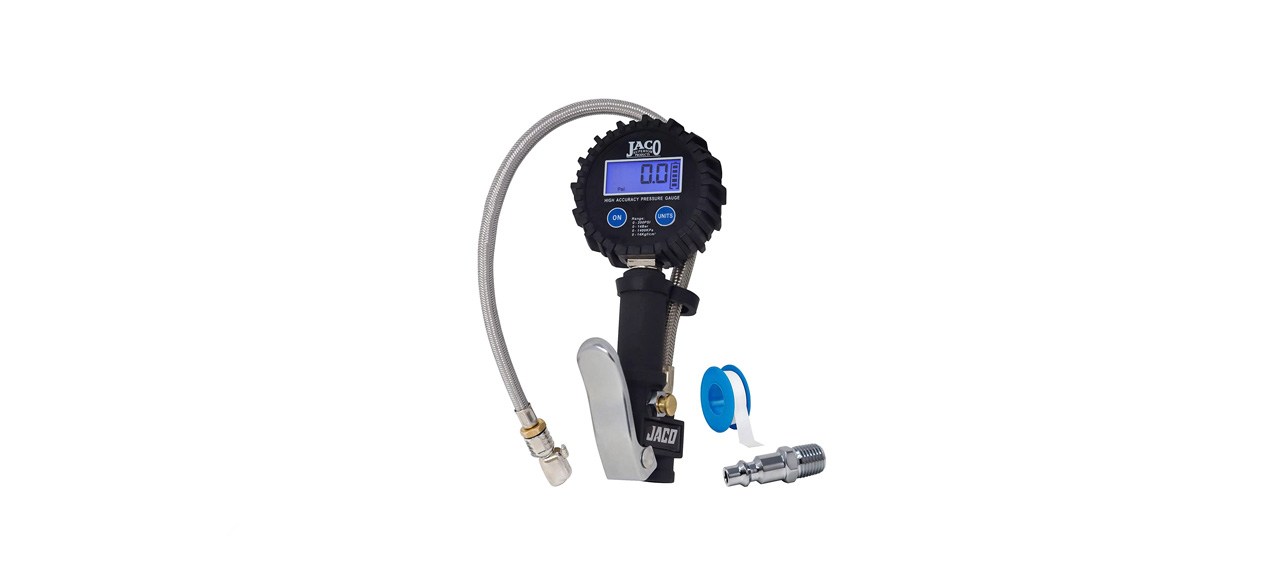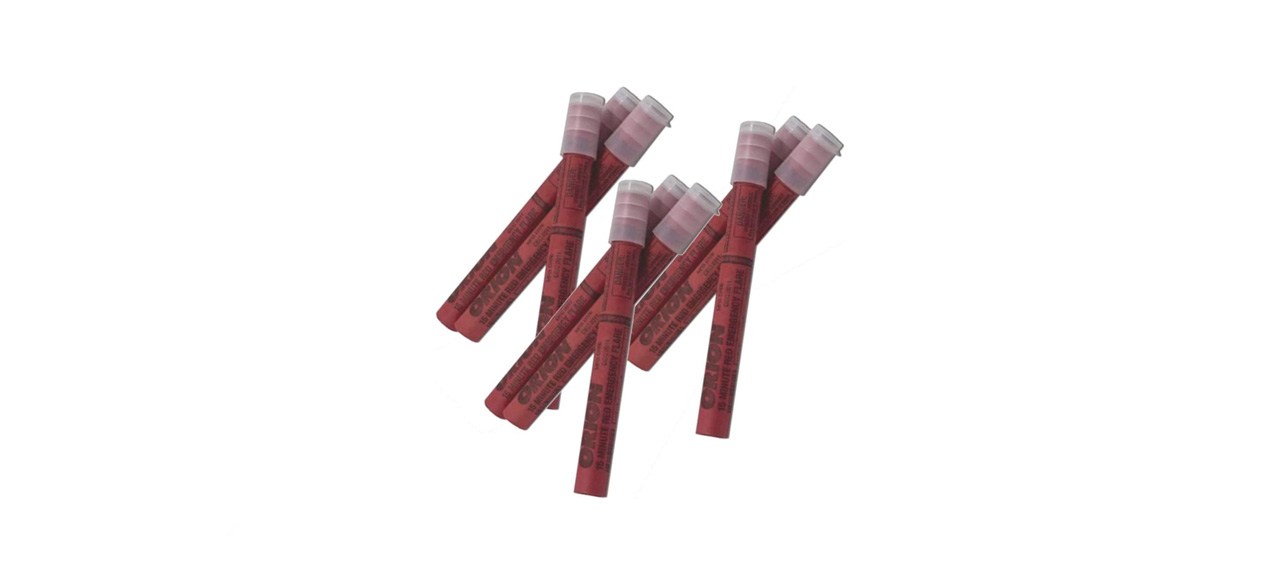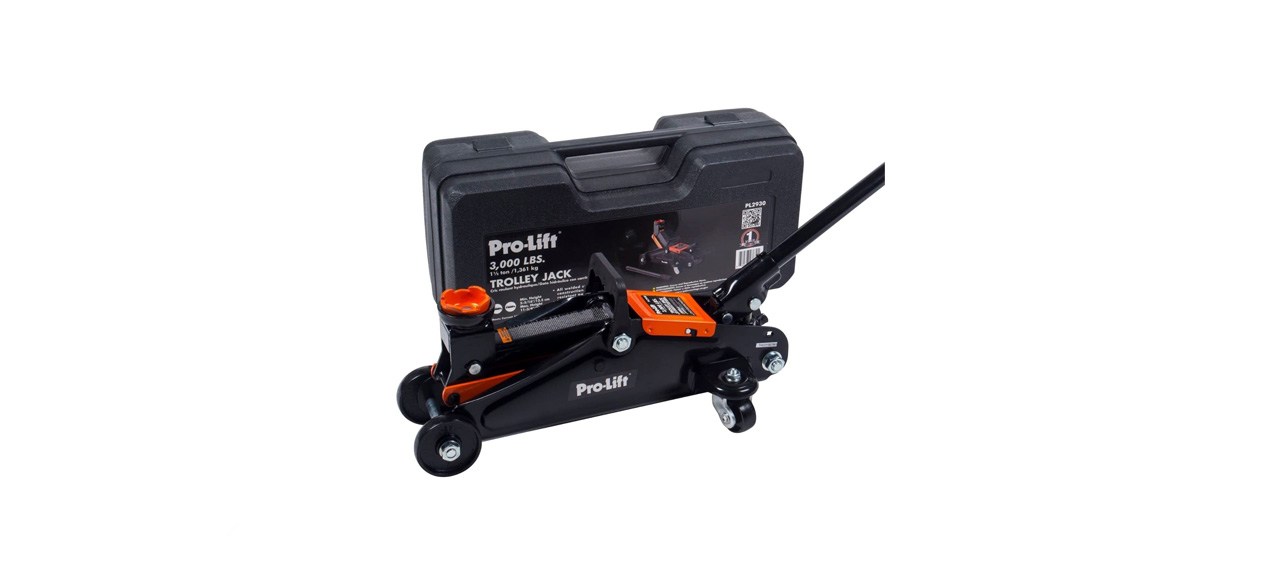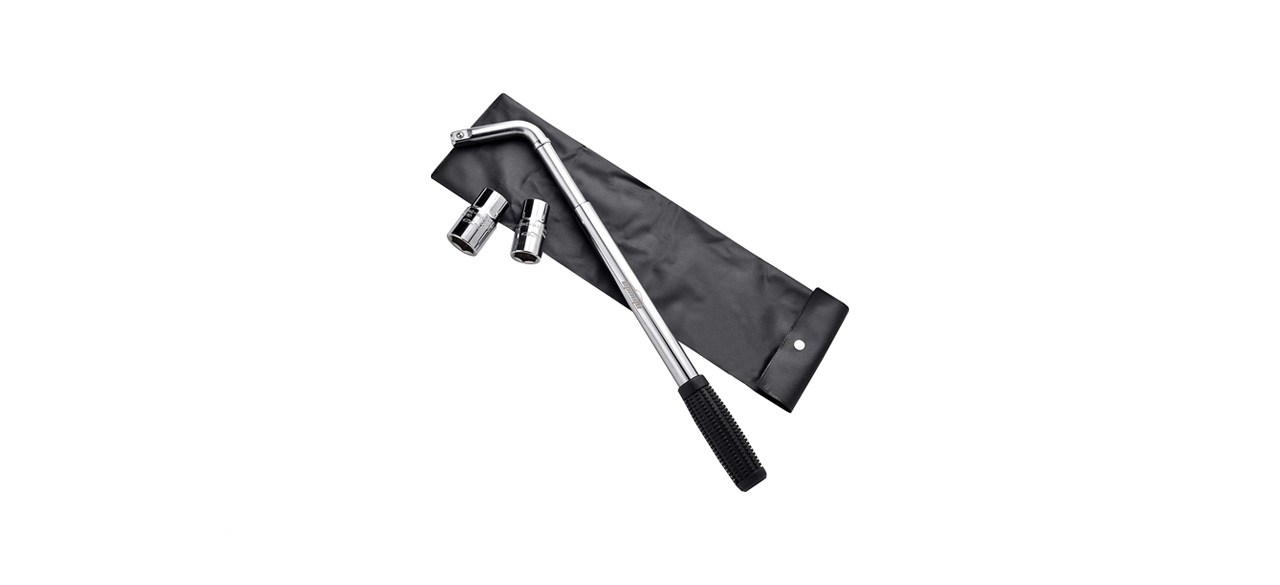Statistics say everyone will experience not one but several flat tires over their lifetime. If you want to be prepared for this unfortunate event, you must learn the safe and proper way to change a tire.
The good news is, changing a flat tire isn’t hard. If you know how to loosen and tighten the nut on a bolt, you can change a tire. This guide will walk you through each step so you never have to fear getting stranded with a flat.
Shop this article: JACO FlowPro Digital Tire Inflator with Pressure Gauge, Pro-LifT Hydraulic Trolley Jack Car Lift with Blow Molded Storage Case and EPAuto Telescoping Lug Wrench

How to change a flat tire
Find a safe location
If you’re changing your tire at home in a driveway, make sure the vehicle is on level ground — no slope.
If you need to change your tire while on the road, pull over to a safe location. Don’t turn your wheel or brake abruptly. Search for a long, straight, level stretch of road with a wide shoulder. A parking lot is best. However, you don’t want to drive on a flat tire, because you risk ruining the tire, the rim, and more. If you’re faced with the choice of either parking your car in a dangerous location or driving a little way to safety, it’s better to keep yourself safe because a car can always be repaired.
Make your car easy to see
Turn off the engine, put your car in park, and apply the emergency brake. Turn on your hazards. If you have road flares, emergency LED lights, or traffic cones, use them. The easier it is for other drivers to see your car, the safer you’ll be.
Secure the car
Double-check to make sure the vehicle is in park and the emergency brake has been applied. If you have wheel chocks, place them on the tire that’s diagonally opposite of the flat. For example, if your driver’s side rear wheel is flat, secure the passenger’s side front tire.
Gather your tools
Locate your spare, the lug wrench, and your car jack. Most of the time, these items are under the floor of the trunk. If you have a van, the tire may be under the vehicle.
Remove the hubcap
The hubcap can be pried off — the end of the lug wrench that looks like a large flathead screwdriver is used for this task. Remove the hubcap and set it in a secure location that’s out of the way. If the lug nuts are already exposed, you can skip this step.
Loosen the lug nuts
Take the lug wrench and place it over a lug nut of your choosing. Move the lug wrench in a counterclockwise direction (the opposite way the second hand moves around a clock). This might be very hard to do and require a great deal of force, which is why the car must be secured. It’s possible that you won’t be able to loosen the lug nut with your hands. If this is the case, you can use your foot and your body weight to press down on the lug wrench, making sure it moves in a counterclockwise direction.
Once you free the first lug nut, stop. Don’t remove it. The lug nut only needs to turn about a half rotation. Move the lug nut diagonally across from the one you just loosened. Repeat the process you just used to loosen this one as well. Continue moving in a star pattern until all the lug nuts have been loosened at least a half turn.
Raise the vehicle
Following the directions in your owner’s manual, place the car jack in the designated location and raise the vehicle just enough so the tire is no longer touching the ground. Make sure the car jack is secure and won’t tip. If you don’t follow the directions for proper placement, you will damage your vehicle when you raise the jack.
Finish unscrewing the lug nuts
The lug nuts should be loose enough to unscrew by hand. If you need a little help with the lug wrench, that’s okay. However, if you have to apply a great deal of force, set the car down again before loosening — you don’t want to be rocking the car when it’s up on the jack. It’s easiest to undo the lug nuts in a star pattern, as this keeps the tire somewhat level. Put the lug nuts in a safe location where they can’t roll away.
Remove the tire
Carefully slide the tire off your vehicle and set it to the side, out of the way.
Place the new tire (or donut) on the vehicle
Place the spare tire (or donut) on your vehicle. If the tire doesn’t fit, you may have to jack the car up a few more inches. This is fine, just keep all body parts out from under the vehicle while you’re raising it higher.
Screw on the lug nuts
It’s extremely important that the new tire goes on evenly. Start with one lug nut and screw it on by hand — to tighten, spin the lug nut clockwise. Move to the one diagonally across, and screw that one on by hand. Repeat this process in a star pattern until all the lug nuts have been attached. Go around again, tightening by hand. When you can no longer tighten the lug nuts by hand, go around once in a star pattern using the lug wrench. Don’t overtighten at this step. You want the tire secure and level, but for safety, the final tightening should only be done when the vehicle is back on the ground.
Lower the vehicle
Once all the lug nuts are relatively tight and there’s absolutely no wobble in the tire, you can lower the vehicle and remove the jack.
Tighten the lug nuts
Start with one lug nut and tighten it with the lug wrench as much as you can. Move in the same star pattern as before until all the lug nuts are as tight as you can get them. Continue going around in this pattern until you can’t tighten any of the lug nuts anymore.
Replace the hubcap
Line up the hubcap, paying careful attention to the tire’s valve stem, and snap it onto your vehicle.
Clean up the area
Gather up the flat tire, car jack, lug wrench, traffic cones, road flares, LED lights, and tire chocks. Secure these items in your vehicle and you’re good to go.
How to care for your vehicle’s tires
Don’t drive on underinflated tires
When you drive on underinflated tires, there’s too much rubber in contact with the road. This will heat up the tire and cause premature wear and tear. It could also lead to a blowout. An underinflated tire makes your vehicle more difficult to control and increases its fuel consumption.
Don’t drive on overinflated tires
An overinflated tire bulges in the center and wears out more quickly. It’s also a less comfortable ride because you feel more of the imperfections of the road.
Don’t drive on bald tires
Tires that have low tread are more prone to punctures and blowouts. Braking, steering, and fuel economy can be negatively impacted when driving on bald tires.
Avoid construction sites
If your neighbors are getting a new roof or the office complex is being renovated, avoid these areas as much as possible to reduce your chances of picking up a stray nail in your tread.
Pick up nails and screws that you find in the road
If you’re out walking and you see a nail or a screw in the road, consider picking it up (if it’s safe to do so).
FAQ
Can I drive on a flat tire?
A. You should never drive on a flat tire. You don’t have as much traction or control when a tire goes flat, so it makes driving much more dangerous. If you continue to drive on a flat tire, it can split and tear. Worse, you can potentially damage the rim, brakes, alignment, suspension, and steering system.
Why is my flat tire indicator light on if my tire looks fine?
A. The tire pressure monitoring system turns on your indicator light as soon as one or more tires fall outside the recommended operating range. If you have a slow leak, the tire might not look flat right away. The best strategy is to check the pressure of all four tires when your indicator light goes on to see which tires are not inflated to the recommended pressure.
Tools you need to change a tire
When your low-pressure indicator light goes on, it doesn’t always tell you which tire is flat. A tire pressure gauge is the tool that can quickly check your tire pressure so you know which tire is low. Electric tire pressure gauges are pricier, but provide less room for error when reading the values.
Whenever you have a roadside emergency, you need to let approaching vehicles know. Road flares are the best way to do that at night.
A car jack is used to raise your vehicle so you can change the tire. Most vehicles come with a compact model that can be difficult to operate. If you prefer a car jack that doesn’t require as much effort, you need to purchase it separately.
The lug wrench is the tool that removes the lug nuts. If you don’t have this tool, you won’t be able to change your tire. Most vehicles come with a basic version of this tool, but if you want a higher-quality model, you have to purchase it separately.
Want to shop the best products at the best prices? Check out Daily Deals from BestReviews.
Sign up here to receive the BestReviews weekly newsletter for useful advice on new products and noteworthy deals.
Allen Foster writes for BestReviews. BestReviews has helped millions of consumers simplify their purchasing decisions, saving them time and money.
Copyright 2023 BestReviews, a Nexstar company. All rights reserved.































































